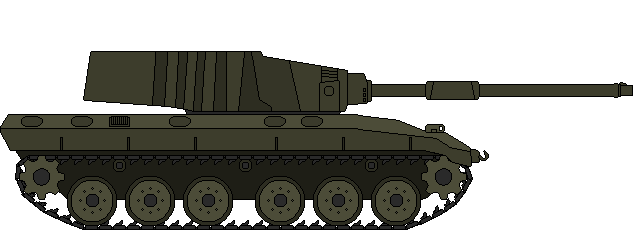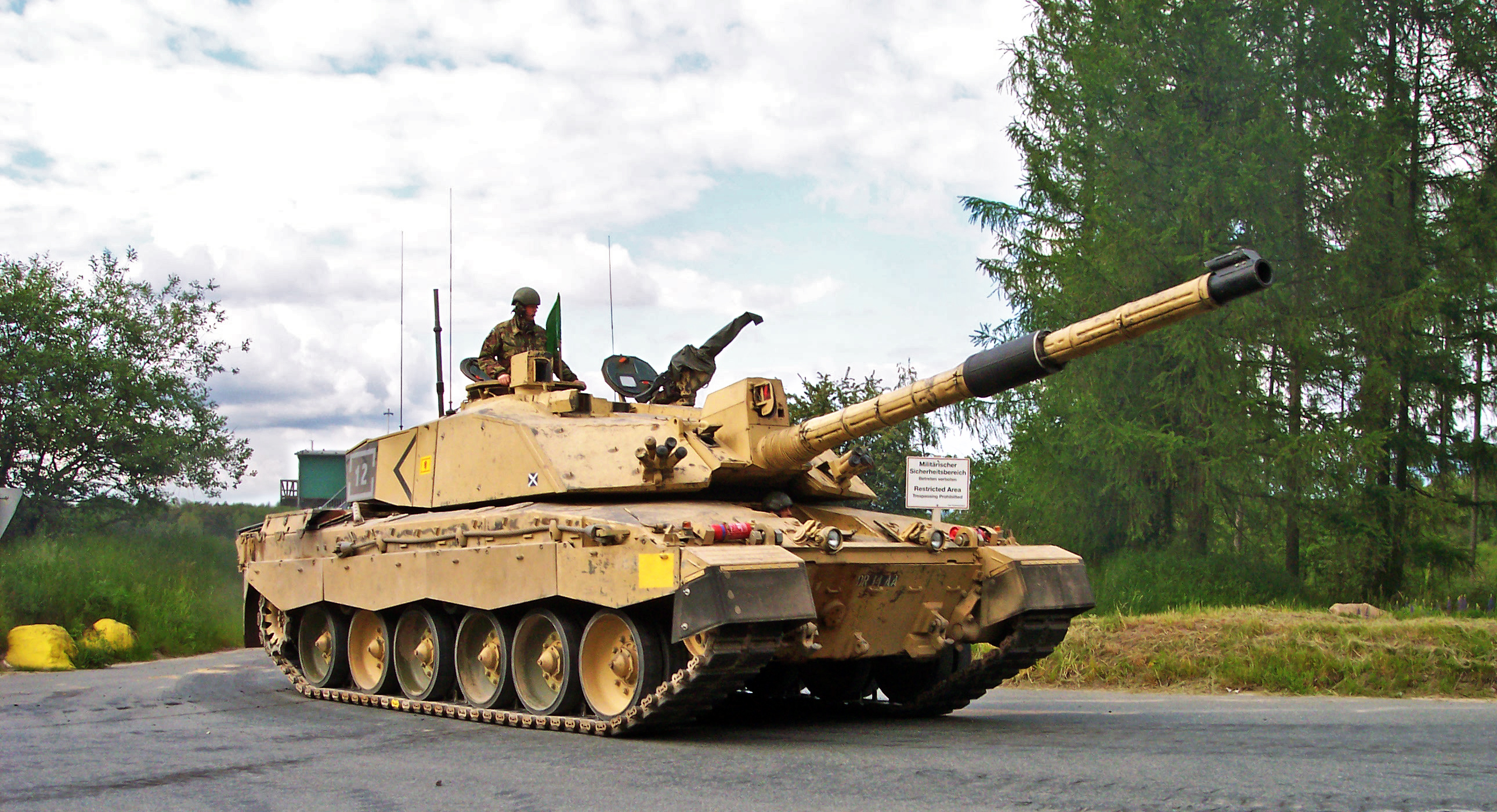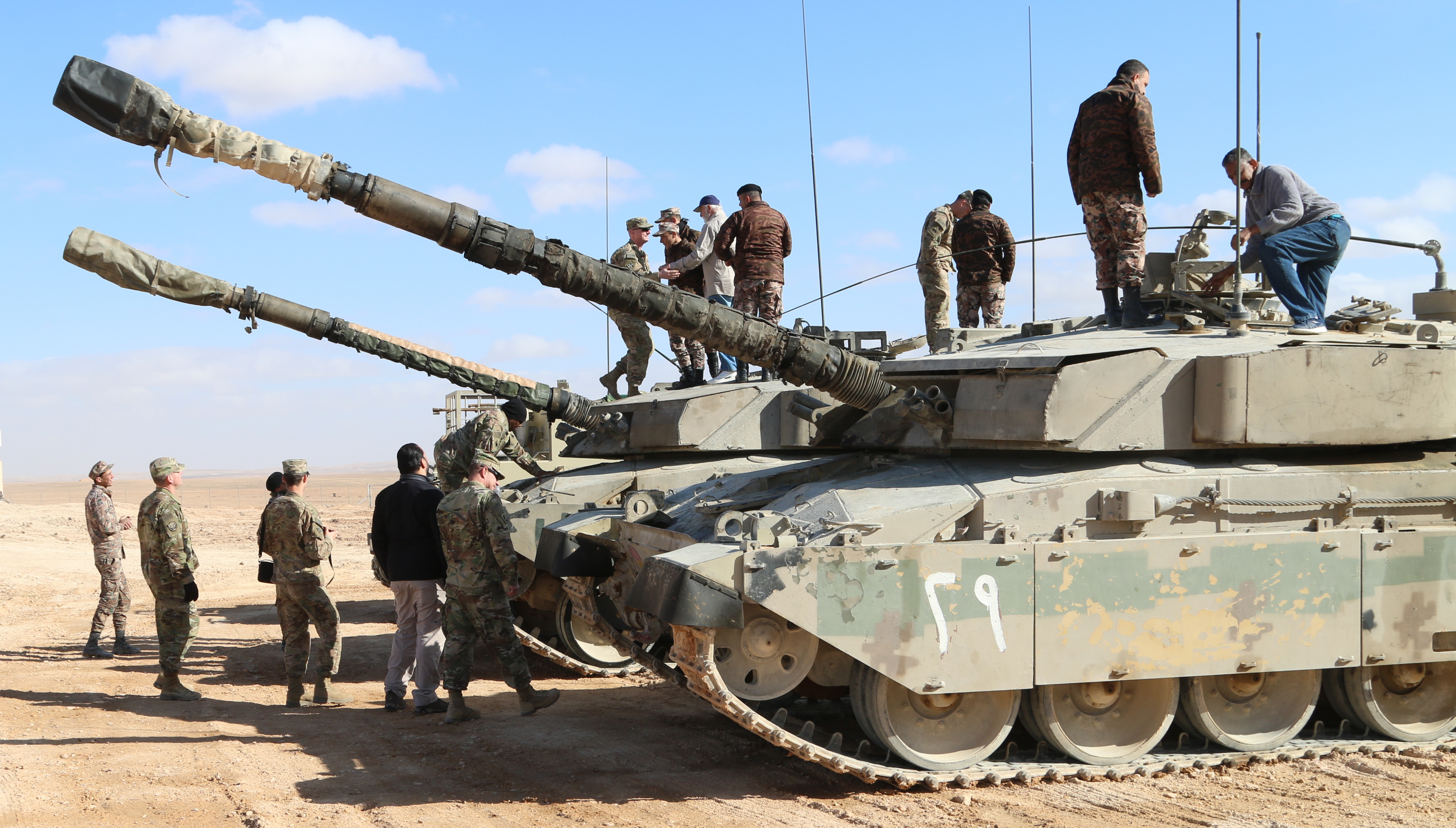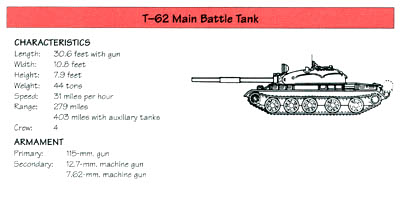|
MBT-80
The FV4601 MBT-80 was a British experimental list of main battle tanks by generation#Third, third-generation main battle tank, designed in the late 1970s to replace the Chieftain (tank), Chieftain tank. It was eventually (and later controversially) cancelled in favour of the Challenger 1, itself an evolution of the Chieftain design. History By the early 1970s, there was a great disparity in the number of tanks being fielded by NATO and the Warsaw Pact in Europe. The US Army fielded the M60 tank, M60 which had been designed to deal with the 100 mm gun of the T-55, but could not withstand the 115 mm gun being fielded on the T-62, let alone the newer 125 mm model of the T-64 and T-72. The same-era West German design, the Leopard 1, was very lightly armoured based on the conclusion that heavy armour had little purpose in an era of high-explosive anti-tank (HEAT) weapons of rapidly improving performance. The concept was to give the tank high manoeuvrability to allow i ... [...More Info...] [...Related Items...] OR: [Wikipedia] [Google] [Baidu] |
List Of Main Battle Tanks By Generation
Main battle tanks are often classified as belonging to a particular generation, although the actual definition and membership in these generations are not defined. Soviet military planners organize tanks with the first generation of tanks up to 1950, and four generations of tanks (with the first main battle tank being the third-generation T-64), while American strategists organize main battle tanks into three generations."The Canadian Directorate of Land Strategic Concept defines three generations of Main Battle Tanks. The first generation of post World War II Main Battle Tanks includes the U.S. M48/M60, the German Leopard 1 and the British Centurion and Chieftain. The second generation includes most of the 120 mm Main Battle Tanks such as the American M1A1, the German Leopard 2 and the British Challenger. As for the third generation Main Battle Tank, they include the latest 'digital' tank such as the French Leclerc and perhaps the American M1A2 and the German Leopard 2A5." T ... [...More Info...] [...Related Items...] OR: [Wikipedia] [Google] [Baidu] |
Chobham Armour
Chobham armour is the informal name of a composite armour developed in the 1960s at the Military Vehicles and Engineering Establishment, a British tank research centre on Chobham Lane in Chertsey. The name has since become the common generic term for composite ceramic vehicle armour. Other names informally given to Chobham armour include ''Burlington'' and ''Dorchester''. ''Special armour'' is a broader informal term referring to any armour arrangement comprising ''sandwich'' reactive plates, including Chobham armour. Within the Ministry of Defence (MoD), ''Chobham'' usually refers specifically to the non-explosive reactive armor & ceramic composites, while ''Dorchester'' is usually in reference to additional armour packages, primarily composed of explosive reactive armour and spaced armour, although these are often conflated when in colloquial usage. Although the construction details of the Chobham armour remain a secret, it has been described as being composed of ceram ... [...More Info...] [...Related Items...] OR: [Wikipedia] [Google] [Baidu] |
Chieftain (tank)
The FV4201 Chieftain was the primary main battle tank (MBT) of the United Kingdom from the 1960s into 1990s. Introduced in 1967, it was among the most heavily armed MBTs at the time, mounting a 120 mm Royal Ordnance L11 gun, equivalent to the much larger specialist heavy tanks in service. It was also among the most heavily armoured, with up to that was highly sloped to offer thickness along the line of sight. A development from the Centurion MBT, the Chieftain introduced the supine (reclining) driver position to British design allowing a heavily sloped hull with reduced height. A new powerpack and improved transmission gave it higher speed than the Centurion despite being heavier due to major upgrades to armour protection and the armament; this allowed it to replace both the Centurion and Conqueror heavy tank while performing their roles effectively. The multi-fuel engine proved to be the design's primary drawback leading to break downs; it was said that the Chieftain ... [...More Info...] [...Related Items...] OR: [Wikipedia] [Google] [Baidu] |
MBT-70
The MBT-70 (German: or ) was an American–West German cancelled joint project to develop a new main battle tank during the 1960s. The MBT-70 was developed by the United States and West Germany in the context of the Cold War, intended to counter the new generation of tanks developed by the Soviet Union for the Warsaw Pact. The new tank was to be equipped with a number of advanced features such as newly developed "kneeling" hydropneumatic suspension and housing the entire crew in the large gun turret, turret, and was armed with a 152mm XM150 gun/launcher, which could use both conventional ammunition and the Shillelagh missile, MGM-51 Shillelagh missile for long range combat. The program faced significant challenges from the start, including poor communication and coordination between the American and West German teams working on the project. The U.S. Army and the German Bundeswehr had different requirements which were not aligned and were not resolved before the project was too f ... [...More Info...] [...Related Items...] OR: [Wikipedia] [Google] [Baidu] |
Challenger 1
The FV4030/4 Challenger 1 is a British main battle tank (MBT) used by the British Army from 1983 to 2001, when it was superseded by the Challenger 2. The majority of the Challenger 1 fleet was subsequently sold to Jordan where it remained in service with the Royal Jordanian Army until withdrawals were announced in 2018. Known locally as ''Al-Hussein'', these vehicles received various Jordanian modifications before being replaced by French-made Leclerc tanks from the UAE and ex-Italian Centauro 8x8 wheeled tank destroyers. The Jordanian Challenger 1 fleet had been retired by January 2023. History The Challenger design by the former Military Vehicles and Engineering Establishment (MVEE) near Chobham in Surrey originated in an Iranian order for an improved version of the Chieftain line of tanks in service around the world. These were the Chieftain Mk5(P)- FV4030/1, FV4030/2 Shir (Lion) 1 and 4030/3 Shir 2. With the fall of the Shah of Iran and the collapse of t ... [...More Info...] [...Related Items...] OR: [Wikipedia] [Google] [Baidu] |
High-explosive Anti-tank
High-explosive anti-tank (HEAT) is the effect of a shaped charge explosive that uses the Munroe effect to penetrate heavy armor. The warhead functions by having an explosive charge collapse a metal liner inside the warhead into a high-velocity shaped charge jet; this is capable of penetrating armor steel to a depth of seven or more times the diameter of the charge (charge diameters, CD). The shaped charge jet armor penetration effect is purely kinetic in nature; the round has no explosive or incendiary effect on the armor. Unlike standard armor piercing shell, armor-piercing rounds, a HEAT warhead's penetration performance is unaffected by the projectile's velocity, allowing them to be fired by lower-powered weapons that generate less recoil. The performance of HEAT weapons has nothing to do with heat, thermal effects, with HEAT being simply an acronym. History HEAT warheads were developed during World War II, from extensive research and development into shaped charge warh ... [...More Info...] [...Related Items...] OR: [Wikipedia] [Google] [Baidu] |
Leopard 1
The Kampfpanzer Leopard, subsequently Leopard 1 following the introduction of the successive Leopard 2, is a main battle tank designed by Porsche and manufactured by Krauss-Maffei Wegmann, Krauss-Maffei in West Germany, first entering service in 1965. Developed in an era when HEAT warheads were thought to make conventional heavy armour of limited value, the Leopard design focused on effective firepower and mobility instead of heavy protection. It featured moderate armour, only effective against low caliber autocannons and heavy machine guns, giving it a high power-to-weight ratio. This, coupled with a modern suspension and drivetrain, gave the Leopard superior mobility and cross-country performance compared to most other main battle tanks of the era, only being rivaled by the French AMX-30 and Swedish Strv 103. The main armament of the Leopard consisted of a German license-built version of the United Kingdom, British Royal Ordnance L7 105 mm rifled gun, one of the most eff ... [...More Info...] [...Related Items...] OR: [Wikipedia] [Google] [Baidu] |
T-72
The T-72 is a family of Soviet Union, Soviet main battle tanks that entered production in 1973. The T-72 was a development based on the T-64 using thought and design of the previous Object 167M. About 25,000 T-72 tanks have been built, and refurbishment has enabled many to remain in service for decades. It has been widely exported and has seen service in 40 countries and in numerous conflicts. The Russian T-90 introduced in 1992 and the Chinese Type 99 tank, Type 99 are further developments of the T-72. Production and development of various modernized T-72 models continues today. Development Development from the T-64 The T-72 was a product of a rivalry between design teams. Kharkiv Morozov Machine Building Design Bureau, Morozov KB was led by Alexander Alexandrovich Morozov, Alexander Morozov in Kharkiv. Uralvagonzavod, Uralvagon KB was led by Leonid Kartsev in Nizhny Tagil. To improve on the T-62, two designs based on the tank were tested in 1964: Nizhny Tagil's Object 167 (T- ... [...More Info...] [...Related Items...] OR: [Wikipedia] [Google] [Baidu] |
T-64
The T-64 is a Soviet tank manufactured in Kharkiv, and designed by Alexander Morozov. The tank was introduced in the early 1960s. It was a more advanced counterpart to the T-62: the T-64 served in tank divisions, while the T-62 supported infantry in motor rifle divisions. It introduced advanced features including composite armour, a compact engine and transmission, and a smoothbore 125-mm gun equipped with an autoloader to allow the crew to be reduced to three so the tank could be smaller and lighter. In spite of being armed and armoured like a heavy tank, the T-64 weighed only . These features made the T-64 expensive to build, significantly more so than previous generations of Soviet tanks. This was especially true of the power plant, which was time-consuming to build and cost twice as much as more conventional designs. Several proposals were made to improve the T-64 with new engines, but chief designer Alexander Alexandrovich Morozov's political power in Moscow kept t ... [...More Info...] [...Related Items...] OR: [Wikipedia] [Google] [Baidu] |
T-62
The T-62 is a Soviet main battle tank that was first introduced in 1961. As a further development of the T-55 series, the T-62 retained many similar design elements of its predecessor including low profile and thick turret armour. In contrast with previous tanks, which were armed with rifled tank guns, the T-62 was the first production tank armed with a smoothbore tank gun which could fire APFSDS rounds at higher velocities (the U.S. prototype T95 medium tank was the first tank ever built with a smoothbore gun). While the T-62 became the standard tank in the Soviet arsenal, it did not fully replace the T-55 in export markets due to its higher manufacturing costs and maintenance requirements compared to its predecessor. Although it was followed by later models in successor states of the Soviet Union, the T-62 remains in reserve in some countries formerly part of the USSR and in frontline use by other countries. Design features of the T-62 became standardized in subseque ... [...More Info...] [...Related Items...] OR: [Wikipedia] [Google] [Baidu] |
T-55
The T-54 and T-55 tanks are a series of Soviet medium tanks introduced in the years following the Second World War. The first T-54 prototype was completed at Nizhny Tagil by the end of 1945.Steven Zaloga, T-54 and T-55 Main Battle Tanks 1944–2004, p. 6 From the late 1950s, the T-54 eventually became the main tank for armoured units of the Soviet Army, armies of the Warsaw Pact countries, and many others. T-54s and T-55s have been involved in many of the world's armed conflicts since their introduction in the second half of the 20th century. The T-54/55 series is the most-produced tank in history. Estimated production numbers for the series range from 96,500 to 100,000. They were replaced by the T-62, T-64, T-72, T-80 and T-90 tanks in Soviet and Russian armies, but are still used by up to 50 other armies worldwide, some having received sophisticated retrofitting. The Chinese version of the T-54A is the Type 59. During the Cold War, Soviet tanks never directly faced their NA ... [...More Info...] [...Related Items...] OR: [Wikipedia] [Google] [Baidu] |
M60 Tank
The M60 is an American second-generation main battle tank (MBT). It was officially standardized as the Tank, Combat, Full Tracked: 105-mm Gun, M60 in March 1959. Although developed from the M48 Patton, the M60 tank series was never officially christened as a Patton tank. It has been called a "product-improved descendant" of the Patton tank's design. The design similarities are evident comparing the original version of the M60 and the M48A2. The United States fully committed to the MBT doctrine in 1963, when the Marine Corps retired the last ( M103) heavy tank battalion. The M60 tank series became the American primary main battle tank during the Cold War, reaching a production total of 15,000 M60s. Hull production ended in 1983, but 5,400 older models were converted to the M60A3 variant ending in 1990. The M60 reached operational capability upon fielding to US Army European units beginning in December 1960. The first combat use of the M60 was by Israel during the 1973 Yom Kipp ... [...More Info...] [...Related Items...] OR: [Wikipedia] [Google] [Baidu] |











